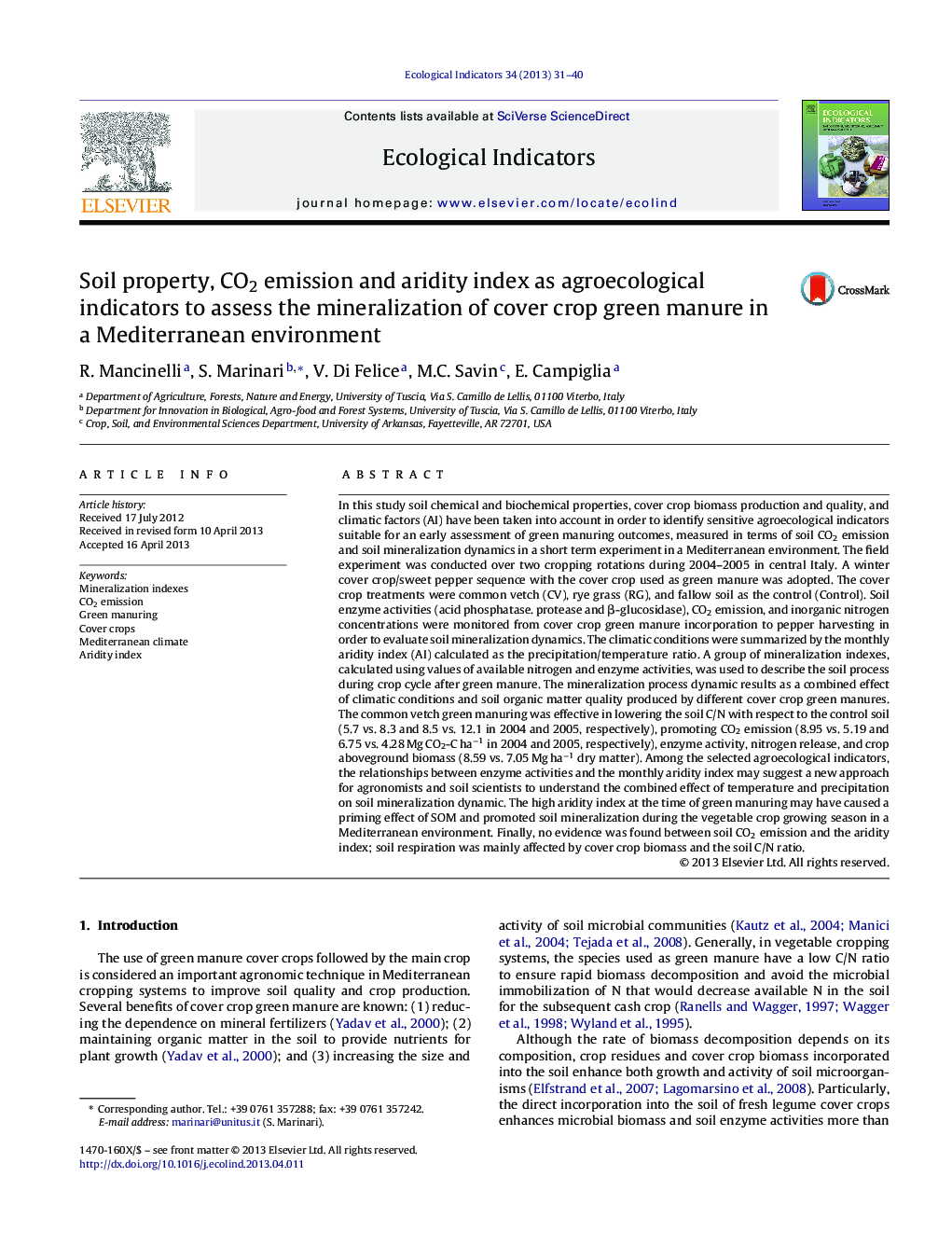| کد مقاله | کد نشریه | سال انتشار | مقاله انگلیسی | نسخه تمام متن |
|---|---|---|---|---|
| 6295231 | 1617166 | 2013 | 10 صفحه PDF | دانلود رایگان |
عنوان انگلیسی مقاله ISI
Soil property, CO2 emission and aridity index as agroecological indicators to assess the mineralization of cover crop green manure in a Mediterranean environment
ترجمه فارسی عنوان
خصوصیات خاک، انتشار گازهای گلخانه ای و شاخص خشکی به عنوان شاخص های زراعتی برای ارزیابی کانی سازی کود سبز در محیط مدیترانه ای
دانلود مقاله + سفارش ترجمه
دانلود مقاله ISI انگلیسی
رایگان برای ایرانیان
کلمات کلیدی
موضوعات مرتبط
علوم زیستی و بیوفناوری
علوم کشاورزی و بیولوژیک
بوم شناسی، تکامل، رفتار و سامانه شناسی
چکیده انگلیسی
In this study soil chemical and biochemical properties, cover crop biomass production and quality, and climatic factors (AI) have been taken into account in order to identify sensitive agroecological indicators suitable for an early assessment of green manuring outcomes, measured in terms of soil CO2 emission and soil mineralization dynamics in a short term experiment in a Mediterranean environment. The field experiment was conducted over two cropping rotations during 2004-2005 in central Italy. A winter cover crop/sweet pepper sequence with the cover crop used as green manure was adopted. The cover crop treatments were common vetch (CV), rye grass (RG), and fallow soil as the control (Control). Soil enzyme activities (acid phosphatase. protease and β-glucosidase), CO2 emission, and inorganic nitrogen concentrations were monitored from cover crop green manure incorporation to pepper harvesting in order to evaluate soil mineralization dynamics. The climatic conditions were summarized by the monthly aridity index (AI) calculated as the precipitation/temperature ratio. A group of mineralization indexes, calculated using values of available nitrogen and enzyme activities, was used to describe the soil process during crop cycle after green manure. The mineralization process dynamic results as a combined effect of climatic conditions and soil organic matter quality produced by different cover crop green manures. The common vetch green manuring was effective in lowering the soil C/N with respect to the control soil (5.7 vs. 8.3 and 8.5 vs. 12.1 in 2004 and 2005, respectively), promoting CO2 emission (8.95 vs. 5.19 and 6.75 vs. 4.28 Mg CO2-C haâ1 in 2004 and 2005, respectively), enzyme activity, nitrogen release, and crop aboveground biomass (8.59 vs. 7.05 Mg haâ1 dry matter). Among the selected agroecological indicators, the relationships between enzyme activities and the monthly aridity index may suggest a new approach for agronomists and soil scientists to understand the combined effect of temperature and precipitation on soil mineralization dynamic. The high aridity index at the time of green manuring may have caused a priming effect of SOM and promoted soil mineralization during the vegetable crop growing season in a Mediterranean environment. Finally, no evidence was found between soil CO2 emission and the aridity index; soil respiration was mainly affected by cover crop biomass and the soil C/N ratio.
ناشر
Database: Elsevier - ScienceDirect (ساینس دایرکت)
Journal: Ecological Indicators - Volume 34, November 2013, Pages 31-40
Journal: Ecological Indicators - Volume 34, November 2013, Pages 31-40
نویسندگان
R. Mancinelli, S. Marinari, V. Di Felice, M.C. Savin, E. Campiglia,
